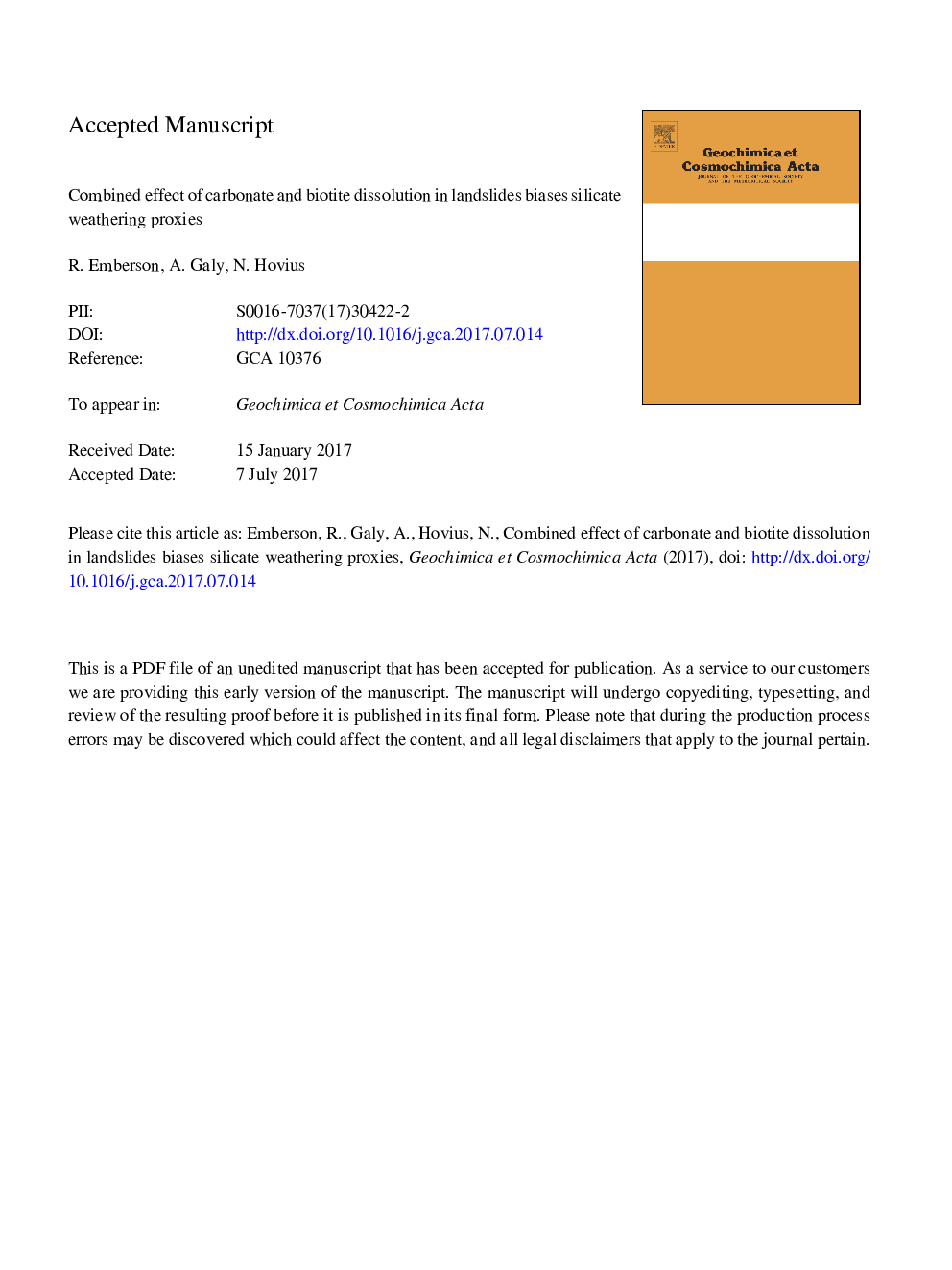| کد مقاله | کد نشریه | سال انتشار | مقاله انگلیسی | نسخه تمام متن |
|---|---|---|---|---|
| 5783341 | 1637944 | 2017 | 39 صفحه PDF | دانلود رایگان |
عنوان انگلیسی مقاله ISI
Combined effect of carbonate and biotite dissolution in landslides biases silicate weathering proxies
ترجمه فارسی عنوان
اثر ترکیبی از انحلال کربنات و بیوتیت در زمین لغزش ها، منجر به پراکندگی هوای فشرده سیلیکات می شود
دانلود مقاله + سفارش ترجمه
دانلود مقاله ISI انگلیسی
رایگان برای ایرانیان
کلمات کلیدی
زمین لغزش، هوای سیلیکات، پروکسی ایزوتوپ، نیوزلند،
موضوعات مرتبط
مهندسی و علوم پایه
علوم زمین و سیارات
ژئوشیمی و پترولوژی
چکیده انگلیسی
Long-term estimates of the dissolution of silicate rock are generally derived from a range of isotopic proxies, such as the radiogenic strontium isotope ratio (87Sr/86Sr), which are preserved in sediment archives. For these systems to fairly represent silicate weathering, the changes in isotopic ratios in terrestrial surface waters should correspond to changes in the overall silicate dissolution. This assumes that the silicate mineral phases that act as sources of a given isotope dissolve at a rate that is proportional to the overall silicate weathering. Bedrock landsliding exhumes large quantities of fresh rock for weathering in transient storage, and rapid weathering in these deposits is controlled primarily by dissolution of the most reactive phases. In this study, we test the hypothesis that preferential weathering of these labile minerals can decouple the dissolution of strontium sources from the actual silicate weathering rates in the rapidly eroding Western Southern Alps (WSA) of New Zealand. We find that rapid dissolution of relatively radiogenic calcite and biotite in landslides leads to high local fluxes in strontium with isotopic ratios that offer no clear discrimination between sources. These higher fluxes of radiogenic strontium are in contrast to silicate weathering rates in landslides that are not systematically elevated. On a mountain belt scale, radiogenic strontium fluxes are not coupled to volumes of recent landslides in large (>100Â km2) catchments, but silicate weathering fluxes are. Such decoupling is likely due first to the broad variability in the strontium content of carbonate minerals, and second to the combination of radiogenic strontium released from both biotite and carbonate in recent landslides. This study supports previous work suggesting the limited utility of strontium isotopes as a system to study silicate weathering in the WSA. Crucially however, in settings where bedrock landsliding is a dominant erosive process there is potential for both random and systematic bias in isotope proxies if the most reactive phases exposed for dissolution by landslides disproportionately contribute to the proxy of choice. This clearly suggests that the isotopic composition of marine Sr is a proxy for periods of rapid mountain uplift and erosion rather than for the associated enhanced silicate weathering.
ناشر
Database: Elsevier - ScienceDirect (ساینس دایرکت)
Journal: Geochimica et Cosmochimica Acta - Volume 213, 15 September 2017, Pages 418-434
Journal: Geochimica et Cosmochimica Acta - Volume 213, 15 September 2017, Pages 418-434
نویسندگان
R. Emberson, A. Galy, N. Hovius,
